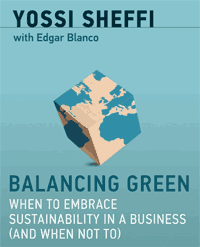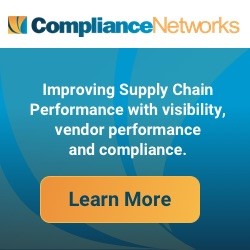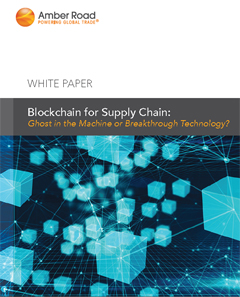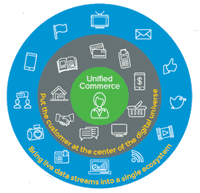MIT's Sheffi on Supply Chain Sustainability
Dr. Yossi Sheffi of MIT is certainly one of the most influential and I would add interesting figures in supply chain today.
Of late, about every three years he produces a new supply chain-related book, the last two being complementary takes on supply chain resilience and risk management. Now, a new book on sustainability, titled "Balancing Green," and I will say though I didn't agree with everything inside, it is a comprehensive and insightful look into what is actually a very complex and multi-layered subject.
| GILMORE SAYS: |
In a great example of the balance in this book, Sheffi notes the actual evidence of consumer preference for Green products is tenuous at best.
WHAT DO YOU SAY?
Send us your
Feedback here
|
As with previous works, it is impeccably researched, with interviews with some 250 mostly CEOs forming the foundation of the work. And there are all types of CEO views on sustainability, such as beyond true-believer Paul Polman, CEO OF Unilever, to many others whose words are often far ahead of their actions and true internal compass.
The book (with supporting writer Edgar Blaco), for example, quotes an executive at one company saying that "If it reduces costs we will do it; otherwise we will not" with regard to sustainability initiatives. That is a stance certainly shared by many other companies, if not most, and a view I think Sheffi himself would say is perfectly logical.
A couple of notes: first, the book is focused on environmental sustainability (CO2, water, etc.), not other forms of corporate social responsibility, even though many companies referenced in the book, such as the aforementioned Unilever, Walmart and a number of others, are embracing full blown CSR, vowing to change the world, not just the just the environment.
Second, while in the end Sheffi is clearly a strong sustainability advocate, the book is extremely well balanced and describes very well the challenges and issues CEOs face in crafting their sustainability strategies, with often conflicting goals. In the end, the top priority has to remain being able to survive and prospers as a business. Most sustainability books in my view do not present the full 360 view.
Let's start with a basic but critical fact: for physical product companies, "sustainability is intimately connected with supply chains, the complex economic structures formed by companies that are using the global supply of natural resources to meet worldwide demand," Sheffi notes.
"Sustainability R Us" we might say. And it is this supply chain complexity (more on that in a moment) that in part makes crafting sustainability strategies such a challenge in practice.
Early on, Sheffi describes the multiple sources of pressure - sometimes rather ruthlessly executed - pushing companies towards sustainability. In fact, after reading Sheffi's examples, I'm surprised more companies haven't been forced to be zealous advocates.
Sheffi starts, for example, with the extreme pressures coming from non-governmental organizations (NGOs), notably Greenpeace, about which one environmentalist says "When Greenpeace reaches for its toolbox, it tends to find only one tool, and that's a mallet."
I had not heard the story of how Greenpeace went after Nestle's KitKat brand in 2010 over its palm oil sourcing, though each candy bar contains just a minute amount of the oil.
Greenpeace produced a parody of KitKat's long-time and very success TV ads with the "Gimme a Break" jingle that in the dark parody version involved a consumer opening the candy, where inside was not a chocolate finger but an orangutan finger, complete with some orange hair, which then spurts blood after the human takes a bite.
The fake commercial then had the jingle around giving the orangutan a break. Wow. The damage to the brand was heavy as Greenpeace leveraged social media to get the ad out.
Nestle was surprised because it though it had a very responsible palm oil sourcing policy, including not sourcing from areas cleared of natural forests, the big issue in the palm oil debate. But it turned out that one of KitKat's suppliers had in fact used deforestation practices. Within 8 weeks, Nestle had acceded to Greenpeace's demands.
Which brings up a critical point well covered in Sheffi's book. Today, global supply chains are incredibly complex, with myriad suppliers both direct and indirect, lots of outsourcing and many companies touching just a piece of the process, many middlemen and more.
 Who can really get control of that is the question. And of course most can't. And though it was more of a social issue than environmental one, Sheffi cites the 2013 collapse of an apparel factory building in Bangladesh that killed more than 100, after which a number of brand companies and retailers such as Walmart and JC Penny initially touted that the factories weren't producing any of their products. But later it was found they in fact were, as major suppliers and middlemen subcontracted to those factories without the buying company having any knowledge of it. Who can really get control of that is the question. And of course most can't. And though it was more of a social issue than environmental one, Sheffi cites the 2013 collapse of an apparel factory building in Bangladesh that killed more than 100, after which a number of brand companies and retailers such as Walmart and JC Penny initially touted that the factories weren't producing any of their products. But later it was found they in fact were, as major suppliers and middlemen subcontracted to those factories without the buying company having any knowledge of it.
Of course, consumer brand companies are especially at risk from being tarred with an anti-sustainability brush. I had not seen this factoid, but Sheffi cited research from BusinessWeek that found about 50% of the market capitalization of companies such as Coca-Cola, McDonald's, Disney and others was the result of their brand equity.
In other words, if the stock prices of these companies were based on traditional financial metrics alone they would have been about half of their actual levels. No wonder CEOs of consumer facing companies feel the pressure to go Green and social. One only has to look at the huge beating Nike took over several years in the 1990s after bungled handling of reports of child labor in its supplier factories.
"Brands are vulnerable, and NGOs know it," Sheffi says.
But in a great example of the balance in this book, Sheffi notes the actual evidence of consumer preference for Green products is tenuous at best.
"Although a number of surveys show consumers say they want sustainable products, only a small percentage of them are actually willing to pay more to buy sustainable products," Sheffi notes.
And circling back around to my comments above about how complex an issue this really is, the realities of consumer behavior put CEOs in a real bind, Sheffi says. How much should they invest in initiatives consumers apparently don't want to pay for? Well, the easy answer might be you only invest in Green efforts that also reduce costs, per the quote from one company cited above.
Sheffi does note there is some evidence that so-called millennials may be more willing to pay for Green, but the data is preliminary at best.
Which is a nice segue to a simple framework Sheffi uses to describe three types of sustainability strategies. First are what he calls eco-efficiency initiatives, which have to do with actions that will reduce operating costs and provide an acceptable return on investment.
Next are eco-risk initiatives, which involve actions that reduce threats from NGOs, regulatory agencies, in some cases the investment community and more. In other words, Nestle had to change its palm oil sourcing practices whether cost justifiable or not due to brand risk. These need to be considered similar to investing in any type of insurance, Sheffi says.
Third, and interestingly, is eco-segmentation, in which investments are made to drive revenue growth by attracting with Green products some portion on the market, even if it is relatively small for now. And this segment may indeed pay more for such products.
There is so much more but I am out of space. I think a part 2 review in a few weeks is called for.
The really is one of the best supply chain books I've read in recent years, notable for the depth of the research, quality of the writing and as mentioned above commendable balance.
I recommend it.
Any reaction to this review of Sheffi's new book? Let us know your thought at the Feedback button below. |



![]()

![]()

![]()












